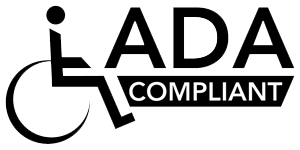There are two types of fiber: soluble and insoluble. It’s important to have both in your diet, and, luckily, most fiber–rich plant foods contain a mixture of both, although they are not usually differentiated on food labels.
Soluble fiber dissolves or swells when it is put into water. Think of the way oatmeal becomes soft and a bit “gooey” in water, unlike, say, wheat flakes. That softness is a sign that oats are rich in soluble fiber. Soluble fiber reduces cholesterol levels and helps keep blood–sugar levels stable. Beans, fruits, and oats are especially good sources of soluble fiber.
Insoluble fiber gets its name from the fact that it does not dissolve in water. Like soluble fiber, it is not readily broken down by the bacteria in your intestinal tract. Insoluble fiber increases fecal bulk and is great for preventing constipation. All plants, especially vegetables, wheat, wheat bran, rye, and brown rice are full of insoluble fiber.
Fiber is only found in foods from plants, such as beans, grains, vegetables, and fruit. It passes through the digestive system with very little change. That means that fiber provides few or no calories, in addition to having many health benefits. While maintaining the health of the digestive tract, it also lowers the risk of certain cancers, heart disease, and diabetes. It can help to control appetite, making it easier to keep weight in check.
Other benefits include:
- Increasing fiber can help decrease the risk of colon and rectal cancers.
? - Diets high in fiber help control blood sugar levels and have also been shown to decrease the risk of developing type 2 diabetes.
? - Fiber can reduce blood cholesterol levels. Diets high in fiber have also been shown to decrease the risk of heart disease.
? - Fiber decreases the risk of diverticulitis, a painful intestinal condition.
? - Fiber helps prevent constipation.
? - Fiber is filling, has almost no calories, and helps maintain blood sugar—all factors that help control hunger and body weight
How much fiber do you need?
Men 50 and younger: 38 grams per day Men 51 and older: 30 grams per day
Women 50 and younger: 25 grams per day Women 51 and older: 21 grams per day
The average American gets less than 15 grams a day.
Sources of Insoluble and Soluble Fiber
Insoluble:
Whole grains:
?
Barley
Brown rice
Bulgur
Rye
Whole–grain breakfast cereals
Whole–grain pasta
Whole–wheat breads
Nuts and Seeds
Vegetables:
Carrots
Cucumbers
Zucchini
Celery
Tomatoes
Soluble:
Oatmeal
Bran
Fruit:
Apples
Blueberries
Nectarines
Strawberries
Legumes:
Beans
Lentils
Peas
Tips to increase your fiber intake:
- Choose oatmeal or a whole–grain cereal every day for breakfast.
- Eat fruit for dessert.
- Use beans in chili and soups.
- Snack on raw vegetables.
- Replace refined grain products such as white bread, rice and pasta with whole–grain varieties, such as brown rice and whole–grain pastas and breads.
- Beans are also loaded with fiber. If you are using canned beans, you can reduce their sodium content by choosing reduced–sodium brands or draining the liquid and rinsing the beans before serving them. If you use dried beans, you’ll avoid added sodium, although cooking is usually more time–consuming.


